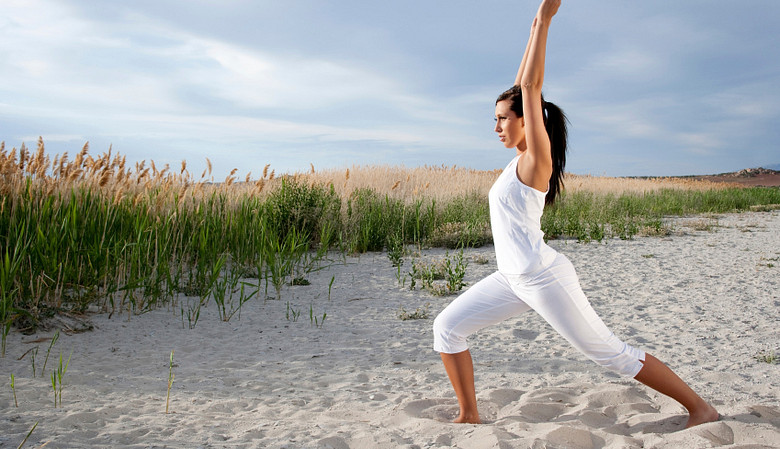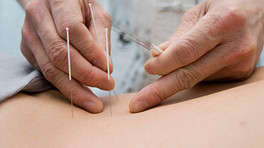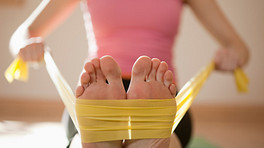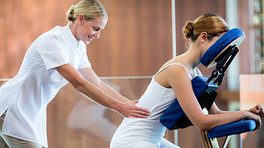If you have arthritis, yoga may help relieve your joint pain and stiffness. Chances are that there are several yoga studios near your home or workplace, each offering a variety of classes. If you don’t know a downward dog from a warrior pose, learning about different types of yoga can help you chose which class is best for you.
Start with a qualified yoga instructor
No matter what type of yoga you decide to try, you’re encouraged to begin with a qualified instructor. Save the yoga videos for later, when you’re more confident with your yoga practice. If possible, find an instructor who has experience working with people with chronic conditions like arthritis. This may require a call to the studio ahead of time.
Before class starts, tell the instructor about which joints are affected by arthritis or injuries. He or she should be able to show you ways to modify poses before or during class.
See Ways to Get Exercise When You Have Arthritis
If it hurts, stop
Yoga stretches muscles, and stretching can feel uncomfortable. Joint pain, however, is a sign of a possible injury and should be avoided. Don’t do a pose if it causes pain, even if it seems like everyone else in the class can do it.
Different types of yoga for arthritis
While all yoga classes combine physical postures with breathing and meditation, the poses, sequence, and pace can vary significantly. To choose, think about your arthritis symptoms and your primary goal. Do you want help maintaining posture and alignment? Do you want a slow-paced class that emphasizes relaxation and tension relief or a fast-paced class that builds muscle?
Commonly offered yoga classes include:
Hatha yoga
In US and most of the West, hatha yoga is used as an umbrella term to describe many types of yoga. If a studio offers hatha yoga classes, call ahead or read studio’s description to find out what to expect. A beginner hatha yoga class with an experienced instructor is probably okay for most new yogis.
Iyengar yoga
This type of yoga is often recommended to people who have arthritis because it can be adapted for limited mobility in one or more joints. Assistive props, such as ropes and foam blocks, can be used during challenging poses. For example, people who can’t bend over and touch their toes can place a foam block on the floor and reach for that, instead. Iyengar yoga prioritizes proper body alignment and precise movements.
Iyengar yoga is one of the most researched types of yoga, with several studies suggesting it may reduce arthritis symptoms. 1 Kolasinski SL, Garfinkel M, Tsai AG, Matz W, Van Dyke A, Schumacher HR.Iyengar yoga for treating symptoms of osteoarthritis of the knees: a pilot study. J Altern Complement Med. 2005 Aug;11(4):689-93. doi: 10.1089/acm.2005.11.689. PubMed PMID: 16131293. , 2 Evans S, Moieni M, Lung K, Tsao J, Sternlieb B, Taylor M, Zeltzer L. Impact of iyengar yoga on quality of life in young women with rheumatoid arthritis. Clin J Pain. 2013 Nov;29(11):988-97. doi: 10.1097/AJP.0b013e31827da381. PubMed PMID: 23370082; PubMed Central PMCID: PMC3644391. , 3 Deepeshwar S, Tanwar M, Kavuri V, Budhi RB. Effect of Yoga Based Lifestyle Intervention on Patients With Knee Osteoarthritis: A Randomized Controlled Trial. Front Psychiatry. 2018;9:180. Published 2018 May 8. doi:10.3389/fpsyt.2018.00180
Hot yoga and Bikram yoga
Heat can loosen up soft tissues and make joints more flexible. When your soft tissues are more flexible, you can more comfortably bend and flex stiff, arthritic joints.
Hot yoga classes take place in rooms that are at least 90 degrees. One trademarked type of hot yoga, called Bikram yoga, takes place in a 105-degree heated room and features 26 postures and 2 breathing exercises in the same order for each class. Bikram yoga does not use the downward-dog or plank poses, making it a potentially good choice for people who have wrist and hand arthritis. (Other yoga classes can offer alternatives to these poses.)
Hot yoga classes tend to move at a relatively slow pace. Even so, the high temperature can be strenuous. It’s okay for people—beginners and experienced yogis alike—to take a break and rest on their mats during class.
Yin yoga
Stretching and breathing are the main focus of yin yoga. Stretching poses may be held for a long time—often a 45 seconds to 2 minutes for beginners. Holding poses for this amount of time can feel good to people who want to stretch soft tissues without putting too much stress on arthritic joints.
The slow pace of Yin yoga can make it a relaxing experience, similar to meditation. Yin yoga is good option if your goal is to reduce chronic arthritis pain by reducing stress, muscle tension, and anxiety in the body.
Vinyasa yoga
This type of yoga focuses on matching breath to movement during a flowing sequence of poses. During this flow, certain poses require partial weight to be put in the hands and wrists. Other poses involve lunging.
Vinyasa yoga is often compared to another type of yoga, called Ashtanga yoga. Vinyasa yoga and ashtanga yoga are considered the most athletic types of yoga, and are the basis for “power yoga” classes. Both types of classes are good for building and maintaining muscle—muscle that will help support arthritis joints.
Finding your fit
Most yoga classes will provide the opportunity to:
- Strengthen muscles
- Improve flexibility
- Increase your awareness of body posture
- Relax using breathing exercises
These benefits can lead to less arthritis pain, increased joint range-of-motion, and better joint function.
Ultimately, the best yoga class to treat your arthritis pain is the one that you enjoy and can regularly attend. In addition to the classes a yoga studio offers, consider its location, pricing structure, staff, and even the available parking and locker room amenities, if you plan on using them. These factors, unlike yoga poses, cannot be adapted to suit your individual needs.
Learn more:
- 1 Kolasinski SL, Garfinkel M, Tsai AG, Matz W, Van Dyke A, Schumacher HR.Iyengar yoga for treating symptoms of osteoarthritis of the knees: a pilot study. J Altern Complement Med. 2005 Aug;11(4):689-93. doi: 10.1089/acm.2005.11.689. PubMed PMID: 16131293.
- 2 Evans S, Moieni M, Lung K, Tsao J, Sternlieb B, Taylor M, Zeltzer L. Impact of iyengar yoga on quality of life in young women with rheumatoid arthritis. Clin J Pain. 2013 Nov;29(11):988-97. doi: 10.1097/AJP.0b013e31827da381. PubMed PMID: 23370082; PubMed Central PMCID: PMC3644391.
- 3 Deepeshwar S, Tanwar M, Kavuri V, Budhi RB. Effect of Yoga Based Lifestyle Intervention on Patients With Knee Osteoarthritis: A Randomized Controlled Trial. Front Psychiatry. 2018;9:180. Published 2018 May 8. doi:10.3389/fpsyt.2018.00180











